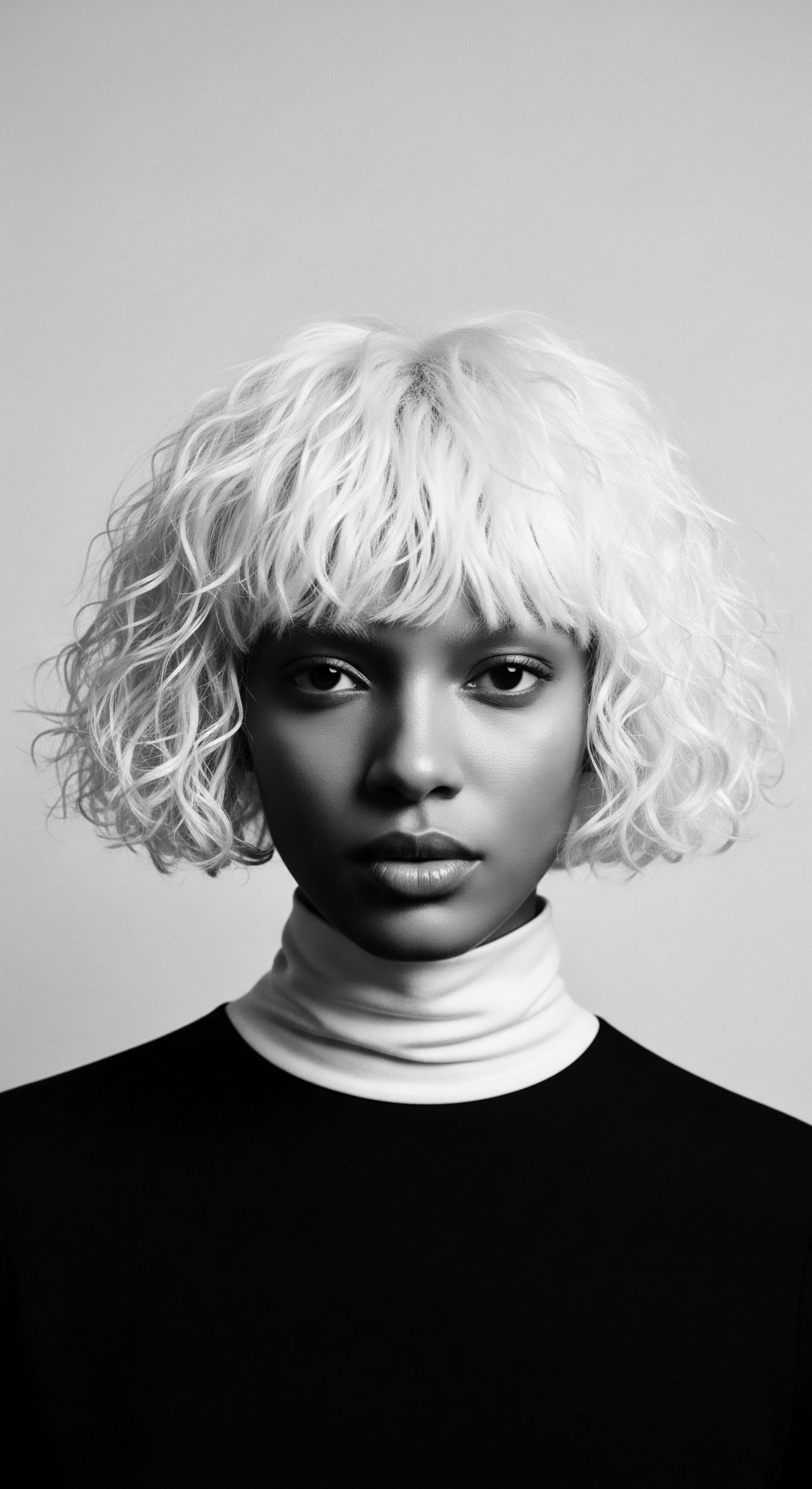
Fundamentals
The essence of Textured Hair Moisture Retention speaks to the intrinsic capacity of coily, curly, and wavy hair strands to hold onto vital hydration. This foundational concept is not merely a technical term within the lexicon of modern hair science; it represents a deep, ancestral understanding of what allows textured hair to thrive. At its core, this refers to the hair’s ability to absorb water and, crucially, to keep that water within its structure, preventing the swift departure of moisture that often leaves these unique hair types feeling dry and vulnerable. It is an explanation of the hair’s delicate balance with its environment, a balance that has been observed and addressed through generations of care.
The significance of effective moisture retention for textured hair cannot be overstated. Without sufficient internal water content, these strands can become brittle, leading to breakage and diminished vitality. This understanding, though now often articulated through scientific frameworks, echoes the wisdom of forebears who instinctively recognized the need to protect and nourish hair against the elements. Their practices, steeped in communal rituals and natural ingredients, were, in effect, early explorations into the very meaning of moisture preservation for hair that coiled and spiraled in its own unique way.
Textured Hair Moisture Retention defines the profound ability of coily, curly, and wavy hair to absorb and safeguard its essential hydration, a concept deeply woven into ancestral hair care wisdom.

The Intrinsic Architecture of Textured Hair
To truly comprehend moisture retention, one must first appreciate the distinct structural attributes of textured hair. Unlike straight hair, which tends to have a more uniform, circular cross-section, textured strands possess an elliptical or even flattened shape. This unique geometry, coupled with the natural twists and turns of the curl pattern, creates a complex surface.
The cuticle, the outermost layer of the hair, composed of overlapping scales, does not lie as flat on a highly coiled strand as it might on a straight one. These slightly raised cuticles, while providing texture, also present more opportunities for moisture to escape.
The natural oils, known as sebum, produced by the scalp, face a more challenging journey traversing the intricate pathways of a curly or coily strand to reach the ends. This uneven distribution means that the tips of textured hair are often the most susceptible to dryness, necessitating external methods of moisture replenishment and sealing. This biological reality, understood through generations of observation, informed traditional practices aimed at safeguarding the hair’s inherent moisture.

Why Water is the Wellspring of Health
Water remains the primary source of hydration for hair. When we speak of moisture retention, we are speaking of the hair’s capacity to draw water from its surroundings and hold it. Products and practices aimed at moisture retention do not introduce a new form of hydration but rather work to support the hair’s natural ability to absorb and keep water. This fundamental truth guided ancient communities in their use of water-based concoctions and the strategic application of natural sealants to maintain hair’s supple state.

Intermediate
Moving beyond the foundational understanding, the intermediate interpretation of Textured Hair Moisture Retention delves into the nuanced interplay of hair biology, environmental factors, and the profound historical and cultural responses to these realities. This concept is not merely about preventing dryness; it is a declaration of resilience, a testament to the ingenious methods developed across generations to sustain the vibrancy of textured hair against various challenges. The preservation of moisture became a cornerstone of hair care, influencing rituals, communal bonds, and the very identity expressed through hair.
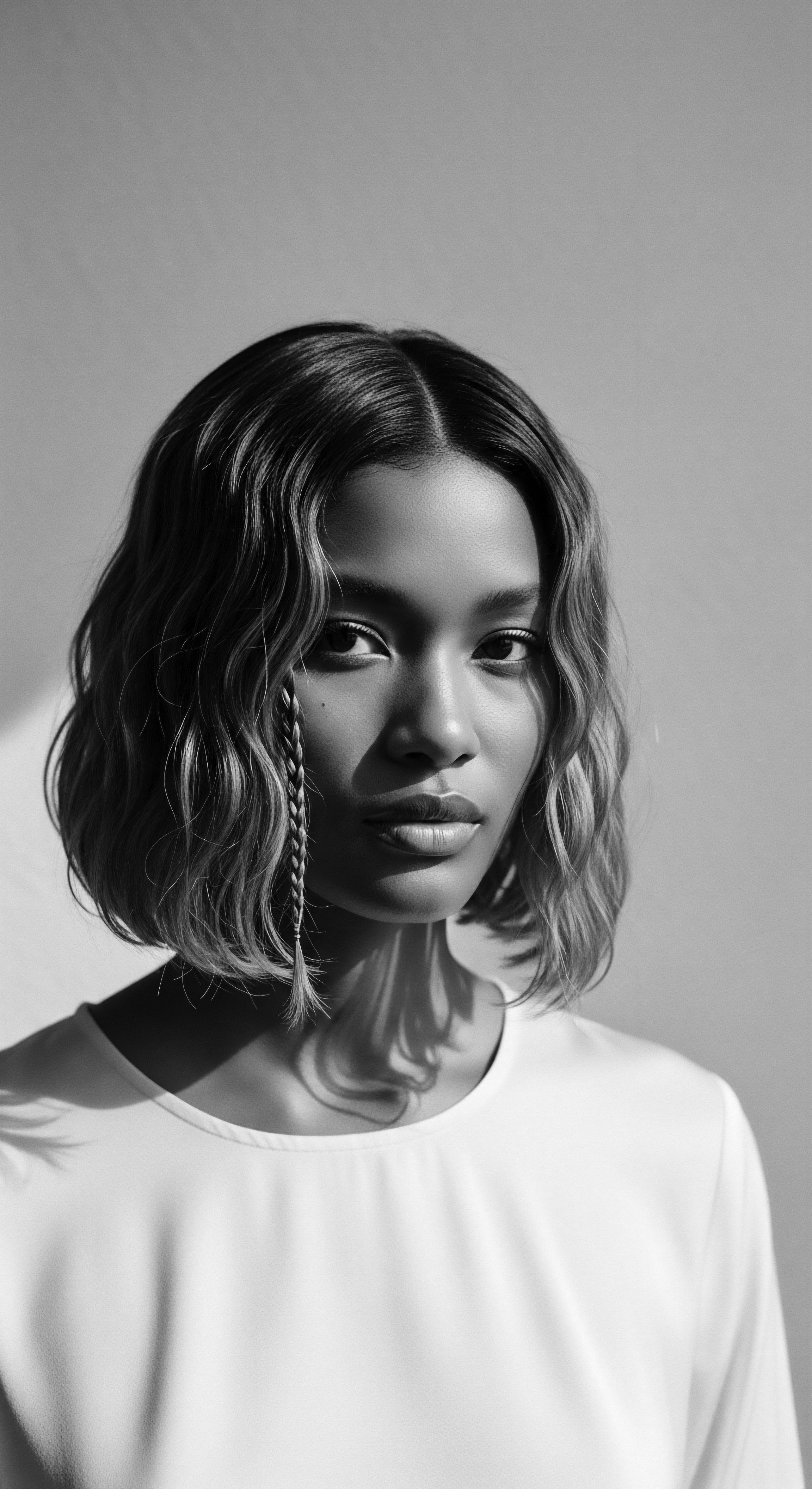
The Strand’s Architectural Uniqueness and Moisture Dynamics
The singular helical structure of textured hair means that each curl, coil, or wave acts as a unique pathway for moisture. The numerous bends along the hair shaft present more opportunities for the cuticle layer to lift, allowing water to evaporate more readily from the hair’s cortex. This inherent structural predisposition to moisture loss was not a deficit in the eyes of ancestral communities, but rather a characteristic that required a specific, informed approach to care. The very definition of moisture retention, from this perspective, began with a deep observational understanding of the hair’s needs.
Furthermore, the natural sebum produced by the scalp, which provides a protective coating, struggles to travel down the length of a highly coiled strand. This results in the hair ends often being the driest, necessitating targeted application of external moisturizers and emollients. This anatomical reality underscored the necessity of practices that not only introduced water but also effectively sealed it within the hair fiber, a method passed down through oral traditions and practical demonstrations.

Ancestral Wisdom ❉ Early Moisture Keepers
Long before modern science dissected the hair shaft, communities across Africa and its diaspora intuitively understood the importance of moisture. Their hair care rituals were sophisticated systems of moisture preservation, developed through centuries of trial and observation. These practices were often communal, fostering a sense of shared knowledge and identity.
Consider the historical application of natural butters and oils. For instance, in West African traditions, ingredients such as Shea Butter (Vitellaria paradoxa) and Coconut Oil were used to keep hair moisturized, especially in hot, dry climates. These emollients acted as occlusives, creating a protective barrier on the hair shaft that minimized water evaporation. This traditional use, documented in various ethnobotanical studies, highlights a long-standing awareness of moisture sealing as a core principle of hair health.
Ancestral hair care rituals were sophisticated systems of moisture preservation, often employing natural butters and oils to seal hydration within textured strands, a practice deeply rooted in communal knowledge.
- Shea Butter ❉ Known as “women’s gold” in many West African communities, this rich butter from the shea tree was, and remains, a cornerstone for nourishing and moisturizing hair, protecting it from harsh environmental elements.
- Coconut Oil ❉ Widely utilized across various African and diasporic cultures, coconut oil is celebrated for its ability to penetrate the hair shaft, reducing protein loss and helping to prevent damage, thus aiding in moisture retention.
- Palm Oil ❉ Tracing its use back 5000 years in West Africa, palm oil was applied topically to promote moisture retention in both skin and hair, valued for its protective qualities.

The Protective Embrace of Styling
Beyond topical applications, protective styling was, and remains, a crucial strategy for moisture retention. Styles like Braids, Twists, and Cornrows were not merely aesthetic choices; they served a functional purpose, shielding the hair from environmental stressors like sun and wind, which can strip moisture from the hair. These styles minimized manipulation, reduced breakage, and allowed applied moisture to remain locked in for longer periods. This approach, passed down through generations, exemplifies a holistic understanding of hair care where styling and health are inextricably linked.
The significance of these practices extends beyond the physical realm. They became acts of cultural expression and resistance, particularly during periods of forced assimilation. The intricate patterns of braids, for example, could convey social status, marital status, or even tribal affiliation, serving as a silent language that preserved identity and heritage. Maintaining hair health through moisture retention was, therefore, an act of preserving cultural continuity.

Academic
The academic delineation of Textured Hair Moisture Retention extends beyond its functional explanation, embracing a comprehensive analysis of its biological intricacies, its deep anthropological roots, and its enduring socio-cultural resonance within Black and mixed-race hair experiences. This concept signifies the complex physiological processes by which highly coiled and curly hair maintains optimal hydration levels, a challenge amplified by its unique structural morphology. Moreover, it encapsulates the cumulative wisdom of ancestral practices that, through centuries of observation and adaptation, developed sophisticated strategies to address this inherent need, often predating modern scientific validation. The meaning of moisture retention, therefore, is not singular but multifaceted, encompassing biophysical phenomena, historical ingenuity, and a profound cultural identity.

A Precise Delineation ❉ Biophysical Realities of Hydration
From a biophysical standpoint, Textured Hair Moisture Retention refers to the dynamic equilibrium of water content within the hair shaft, specifically the cortex, which is mediated by the integrity of the cuticle layer and the presence of humectants and emollients. The elliptical cross-section and numerous helical turns of textured hair strands contribute to a greater surface area relative to their length, creating more opportunities for water molecules to escape through the cuticle. This inherent characteristic renders textured hair more susceptible to dehydration compared to straighter hair types. The cuticle scales, which ideally lie flat to create a smooth, protective barrier, can be more raised or disrupted at the bends of the curl, further compromising the hair’s ability to seal in moisture.
The natural hydrophobic lipids that coat the hair shaft, derived from sebum, play a crucial role in preventing excessive water loss. However, the tortuosity of textured hair often impedes the uniform distribution of sebum from the scalp down the entire length of the hair strand, leaving the mid-lengths and ends particularly vulnerable to desiccation. Therefore, the strategic application of external agents that mimic or augment these natural protective mechanisms becomes paramount for effective moisture preservation. The scientific understanding of these mechanisms now provides a contemporary lens through which to appreciate the efficacy of time-honored practices.
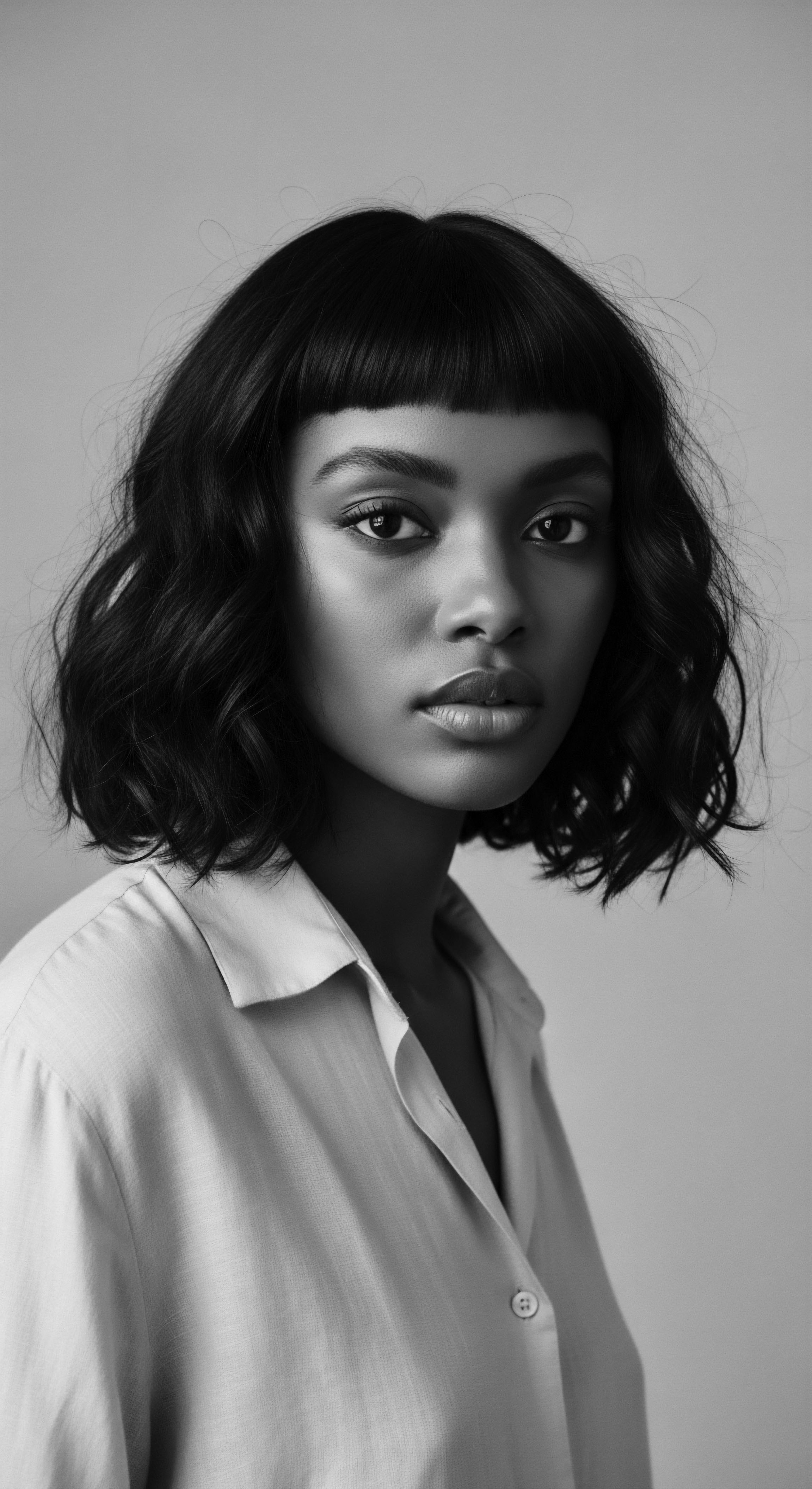
The Ancestral Pharmacopoeia and Its Scientific Echoes
The historical record offers compelling evidence of ancestral communities’ sophisticated understanding of hair hydration, long before the advent of chemical analysis or microscopy. Their methods, deeply rooted in ethnobotany and traditional knowledge systems, represent an empirical science honed over millennia. These practices were not random acts of beautification; they were meticulously developed responses to the biophysical realities of textured hair in diverse climates.
One compelling historical example that powerfully illuminates the connection between Textured Hair Moisture Retention and ancestral practices is the traditional use of Chebe Powder by the Basara Arab women of Chad. For generations, these women have maintained exceptionally long, healthy hair, often extending past their waist, through a unique hair care ritual centered on Chebe powder. This natural powder, derived from a mix of herbs, seeds, and plants native to the Sahel region of Africa, is traditionally combined with oils or butters and applied to damp, sectioned hair, which is then braided and left for days. This practice does not directly stimulate hair growth from the scalp but rather works to prevent breakage and, critically, to lock in moisture.
The physical act of braiding after application creates a protective seal, minimizing evaporation and mechanical stress, thereby facilitating significant length retention by preserving the hair’s internal moisture content. This case study underscores a profound ancestral understanding of moisture sealing and protective styling as intertwined strategies for hair health and length preservation, a wisdom that modern science now affirms.
The wisdom embedded in these practices extended to a diverse range of botanical resources.
| Ingredient (Local Name/Origin) Shea Butter (Oori, West Africa) |
| Traditional Application for Moisture Applied directly to hair and scalp to nourish, moisturize, and protect from sun/wind. Used as a base for other herbal mixtures. |
| Modern Scientific Understanding/Benefit Rich in fatty acids (oleic, stearic, palmitic) and vitamins A & E. Acts as an excellent emollient and occlusive, forming a barrier to prevent transepidermal water loss from hair and skin. |
| Ingredient (Local Name/Origin) Chebe Powder (Chad) |
| Traditional Application for Moisture Mixed with oils/butters, applied to damp hair, then braided to prevent breakage and lock in moisture. |
| Modern Scientific Understanding/Benefit Helps to reinforce the hair shaft and seal the cuticle, preventing moisture evaporation and reducing mechanical damage, thus aiding length retention. |
| Ingredient (Local Name/Origin) Coconut Oil (Various African/Diasporic regions) |
| Traditional Application for Moisture Used for moisturizing, scalp health, and as a pre-wash treatment. |
| Modern Scientific Understanding/Benefit Contains lauric acid, allowing it to penetrate the hair shaft, reducing protein loss and strengthening strands from within, thereby improving moisture retention. |
| Ingredient (Local Name/Origin) Rhassoul Clay (Morocco) |
| Traditional Application for Moisture Used as a cleansing mud wash that purifies without stripping natural oils, leaving hair hydrated. |
| Modern Scientific Understanding/Benefit Possesses high mineral content, drawing out impurities while also conditioning the hair, promoting a clean scalp environment conducive to healthy moisture balance. |
| Ingredient (Local Name/Origin) Palm Oil (West Africa) |
| Traditional Application for Moisture Applied to hair to promote moisture retention and protect against environmental toxins. |
| Modern Scientific Understanding/Benefit Rich in carotenoids (Vitamin A precursors) and tocopherols (Vitamin E), offering antioxidant properties and promoting healthy hair and skin hydration. |
| Ingredient (Local Name/Origin) These ancestral practices, born from intimate knowledge of local botanicals and hair's inherent needs, stand as a testament to an enduring heritage of profound care for textured strands. |
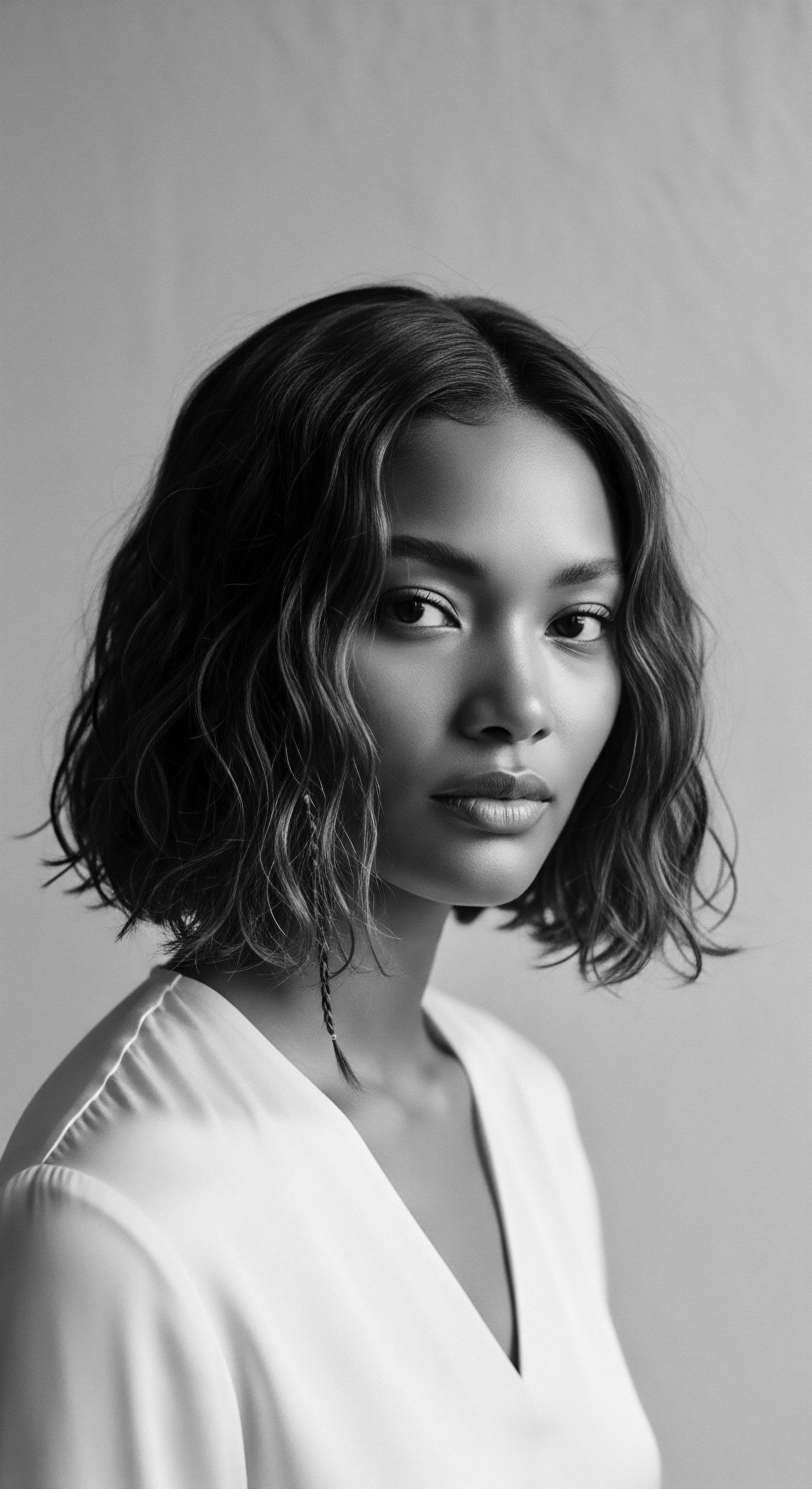
The Socio-Cultural Resonance of Hydrated Strands
The concept of Textured Hair Moisture Retention extends beyond mere physiological maintenance; it holds deep socio-cultural meaning, particularly within Black and mixed-race communities. Historically, hair has served as a powerful medium for identity, status, and communication across various African cultures. Healthy, well-maintained hair, often achieved through diligent moisture retention practices, was a visual marker of well-being, community connection, and even spiritual alignment. The act of caring for hair, particularly through communal rituals of oiling, braiding, and styling, fostered intergenerational bonds and preserved cultural knowledge.
Beyond its physiological role, Textured Hair Moisture Retention carries deep socio-cultural significance, symbolizing well-being, identity, and the enduring strength of intergenerational traditions within Black and mixed-race communities.
During periods of forced migration and enslavement, traditional hair care practices, including those centered on moisture retention, became acts of quiet resistance and cultural preservation. Stripped of their ancestral tools and environments, enslaved Africans adapted their methods, utilizing what was available to maintain hair health and connection to their heritage. The persistence of braiding, even under duress, speaks to its functional role in protecting hair and its symbolic power in preserving identity.
The evolution of hair care in the diaspora reflects a continuous negotiation between ancestral wisdom and prevailing societal pressures. The “Hot Comb Era” and the pursuit of straightened hair, for instance, represented complex responses to Eurocentric beauty standards, yet even within these shifts, the underlying need for moisture and protection remained, albeit often through different means. The contemporary natural hair movement, a powerful resurgence of self-acceptance and celebration of diverse textures, has brought the focus on moisture retention back to the forefront, explicitly linking it to heritage and reclaiming traditional practices. This movement is a testament to the enduring understanding that healthy, hydrated textured hair is not just a personal aesthetic choice, but a profound statement of identity and ancestral pride.

The Enduring Legacy of Hair Knowledge
The academic study of Textured Hair Moisture Retention, therefore, involves not only the molecular science of water and lipids but also the ethnographic study of historical hair care rituals, the economic implications of traditional ingredient supply chains, and the psychological impact of hair on self-perception within diasporic communities. It calls for an interdisciplinary lens, recognizing that the optimal hydration of textured hair is a nexus where biology, culture, and history converge.
The delineation of Textured Hair Moisture Retention must acknowledge its dynamic nature. It is not a static concept but one that has adapted and persisted through various historical epochs and geographical contexts. From the sun-drenched savannahs where shea trees grow abundantly to the bustling urban centers of the diaspora, the pursuit of hydrated, resilient textured hair has remained a constant, shaped by environmental realities and cultural ingenuity. This continuous adaptation and preservation of knowledge underscore the profound value of understanding this concept through a heritage-informed perspective.
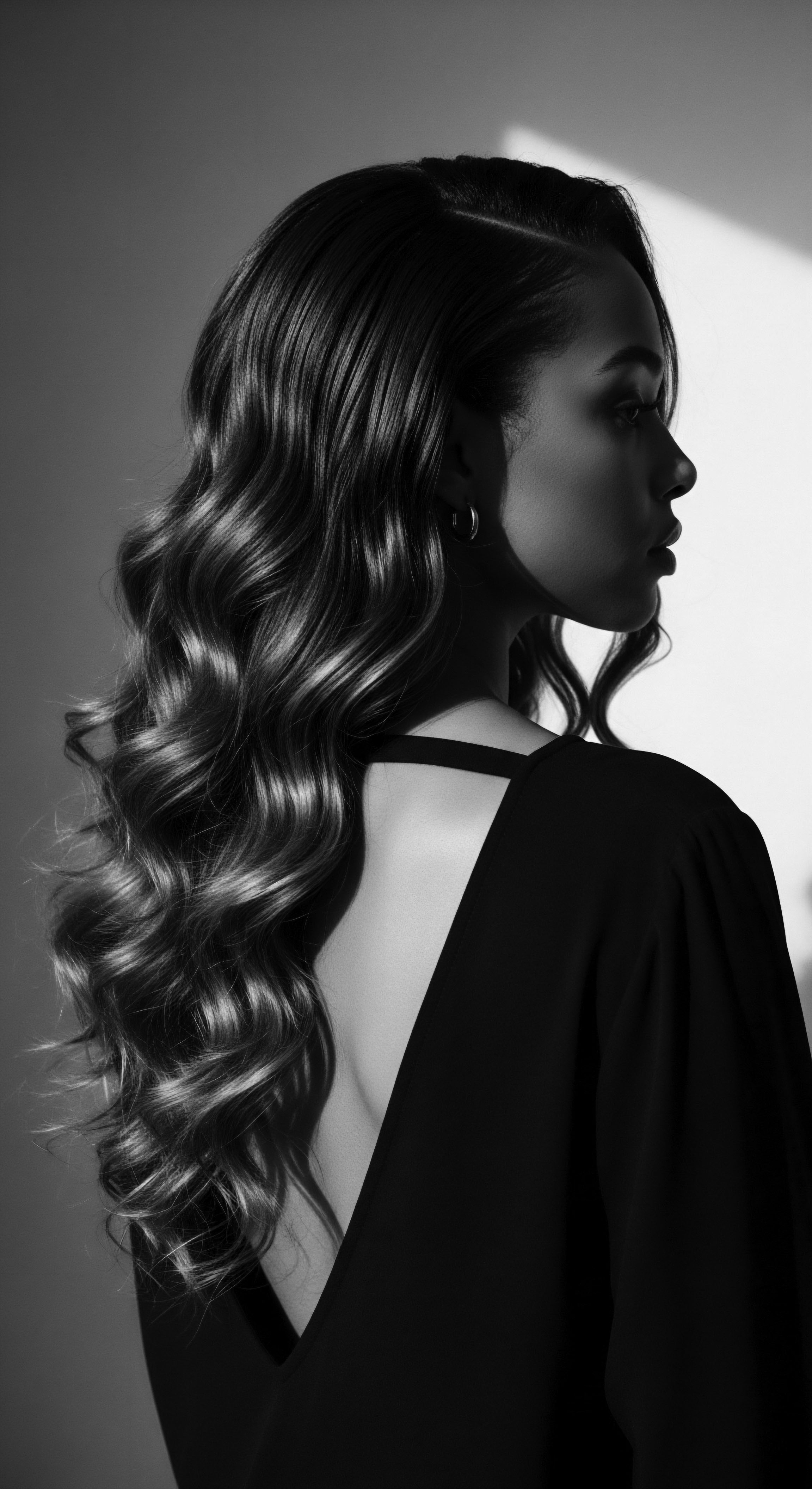
Reflection on the Heritage of Textured Hair Moisture Retention
As we contemplate the meaning of Textured Hair Moisture Retention, we witness more than a scientific principle; we observe a profound meditation on the very soul of a strand. This understanding, rooted in the elemental biology of hair and echoing through ancient practices, reveals a lineage of wisdom passed from hand to hand, generation to generation. It is a testament to the enduring ingenuity of our ancestors, who, with an intimate connection to the earth and its bounties, instinctively understood the vital necessity of water for hair that coiled and spiraled with such unique grace.
The journey of moisture retention from the sun-kissed lands of Africa to the varied climates of the diaspora is a living narrative. It speaks of the tender thread of care that bound communities, where hair rituals were not solitary acts but communal gatherings, strengthening bonds as much as they strengthened strands. The application of rich butters, the careful crafting of protective styles, and the patient nurturing of natural ingredients were all acts of reverence, honoring the hair as a sacred extension of self and identity. These practices, once dismissed as mere folklore, now find validation in contemporary scientific inquiry, bridging the chasm between ancient wisdom and modern understanding.
The unbound helix of textured hair, now celebrated in its myriad forms, carries within its very structure the echoes of this deep past. Each curl, each coil, holds the memory of resilience, adaptation, and unwavering beauty. Understanding moisture retention, then, becomes an act of profound recognition—a recognition of the historical struggles and triumphs, the quiet acts of resistance, and the vibrant expressions of self that hair has always embodied.
It invites us to connect with a legacy of care that transcends time, reminding us that the future of textured hair health is inextricably linked to the wisdom of its heritage. This continuous dialogue between past and present ensures that the story of textured hair, its unique needs, and its enduring spirit, remains a living, breathing archive for all who seek to listen.
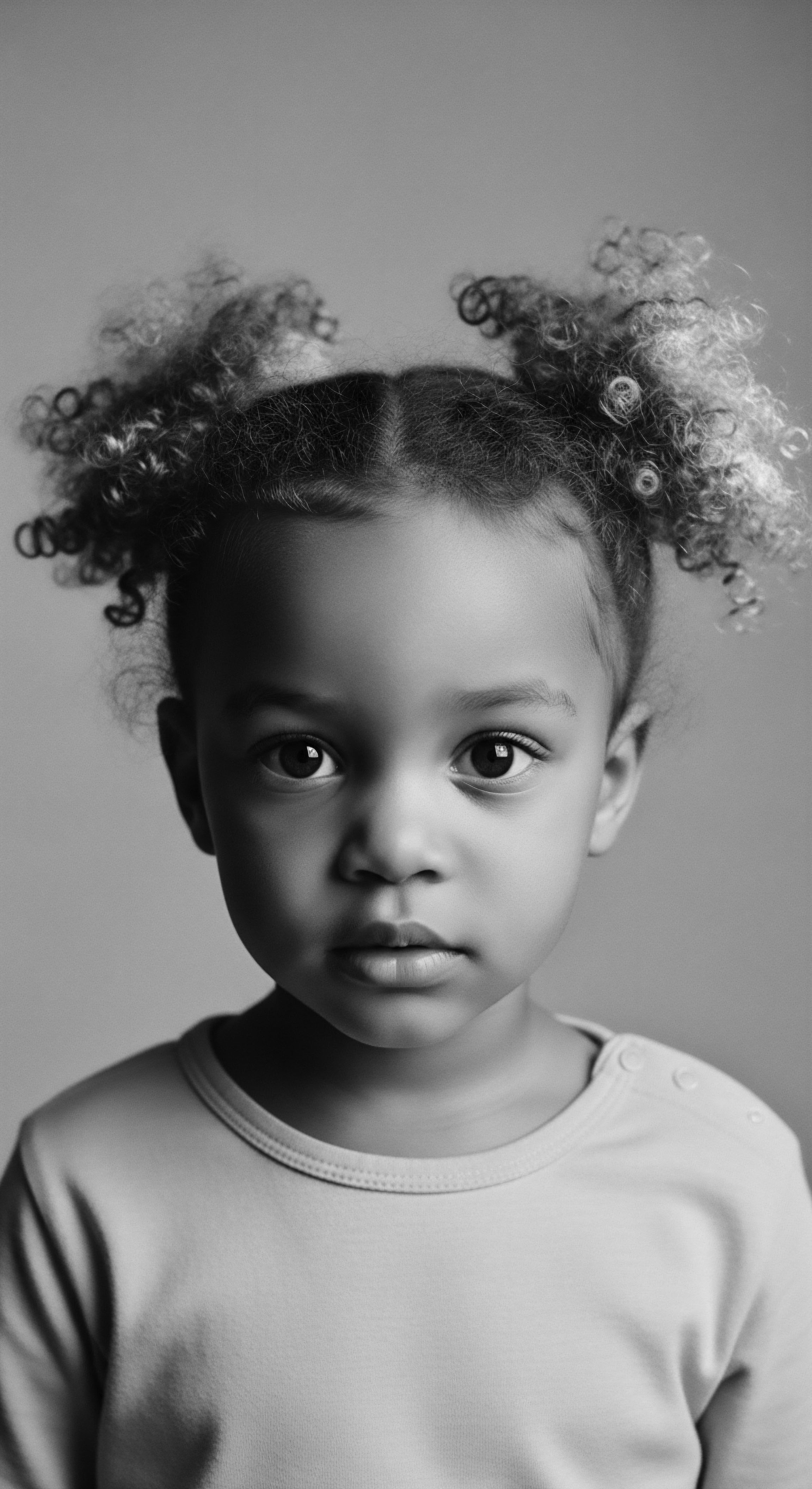
References
- 1. Hair Care Practices from the Diaspora ❉ A Look at Africa, America, and Europe. (2025, January 23).
- 2. Understanding Hair Oiling ❉ History, Benefits & More – Cécred. (2025, April 15).
- 3. Discovering the Origins of Shea Butter – A Journey to the Heart of Africa. (2024, February 10).
- 4. African vs African American Hair ❉ Is There a Difference in Texture? – Rennora Beauty. (2025, January 15).
- 5. Hair care practices in women of African descent – DermNet.
- 6. Historical Perspectives on Hair Care and Common Styling Practices in Black Women. (2025, March 4).
- 7. No raw oils and butters vs. Traditional African hair care? ❉ r/Naturalhair – Reddit. (2021, August 26).
- 8. Discovering the Cultural Heritage of Shea Butter – Thirteen Lune.
- 9. The Rich History of Shea Butter and Its Origins – Paulski Art. (2024, February 14).
- 10. Shea Butter – Explainer – Ciafe. (2023, January 31).
- 11. Natural African Haircare ❉ Celebrating the Afro and Braids – Afriklens. (2024, December 3).
- 12. The History of Chebe Powder ❉ An Ancient African Hair Secret for Hair Growth. (2025, March 15).
- 13. Red Palm Oil & Palm Kernel Oil – For Hair Care & Skin Care – New Directions Aromatics. (2017, October 5).
- 14. Ancient African hair growth secrets that EASILY grow healthiest longest natural hair. (2023, March 30).
- 15. The Rich History of Shea Butter and Cocoa Butter in Skin Care – S.W. Basics.
- 16. Ancient Gems ❉ A Historical Survey of African Beauty Techniques. (2024, February 13).
- 17. Cosmetic Ethnobotany Used by Tribal Women in Epe Communities of Lagos State, Nigeria – Juniper Publishers. (2024, April 19).
- 18. ETHNOBOTANY AND MEDICINAL PLANTS ❉ DISCOVERING NATURE’S HEALING PROPERT – Codex Labs of Europe. (2023, November 16).
- 19. Ethnobotany, Cytotoxicity and Color Stability of Karen Natural Colorants – MDPI.
- 20. Cosmetopoeia of African Plants in Hair Treatment and Care ❉ Topical Nutrition and the Antidiabetic Connection? – MDPI.
